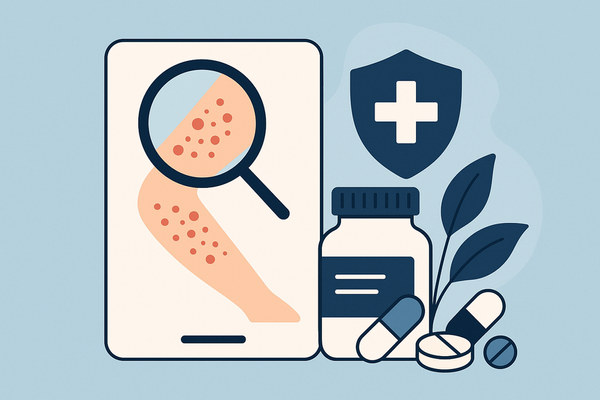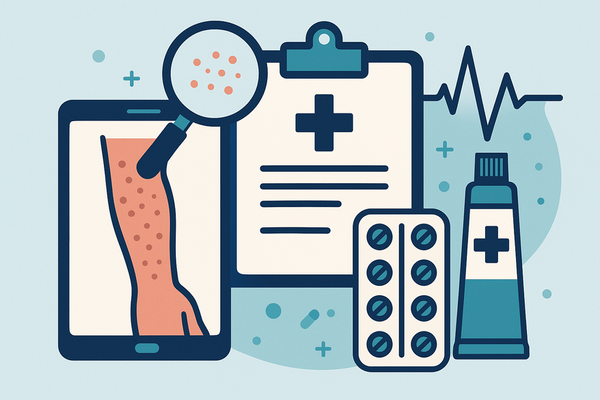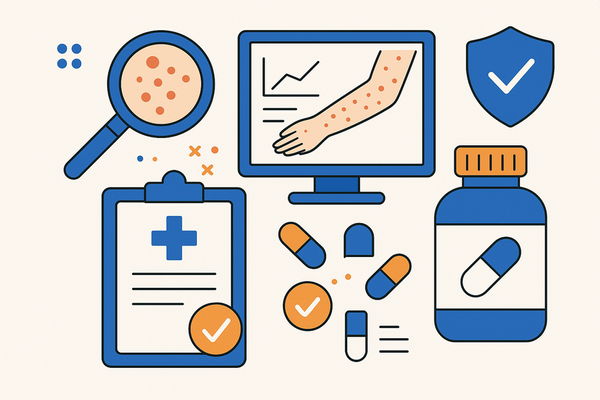Comprehensive Guide to Autoimmune Rash Symptoms: Early Signs, Diagnosis, and Treatment
Explore early signs, diagnosis, and effective treatments for autoimmune rash symptoms to improve quality of life and prevent complications.
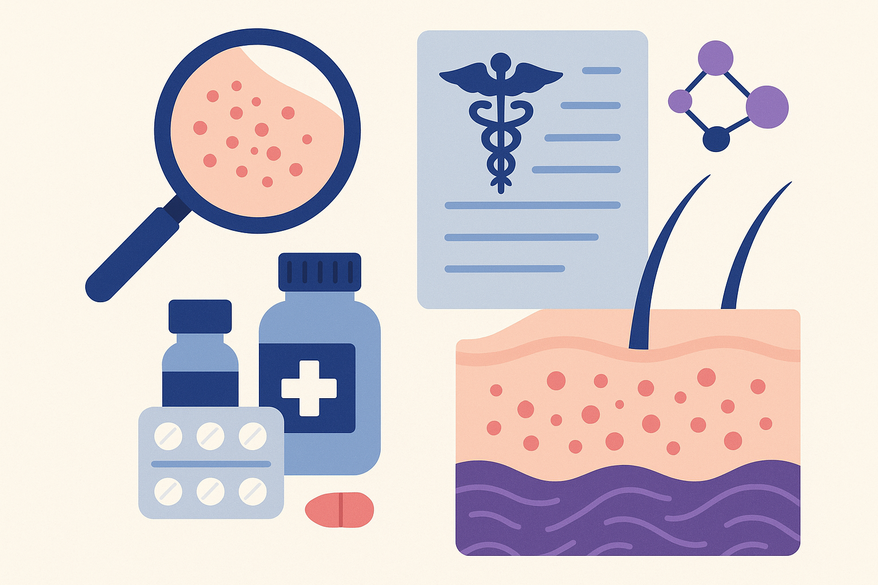
Estimated reading time: 10 minutes
Key Takeaways
- Early signs of autoimmune rashes include redness, scaling, itching, and swelling.
- Distinct patterns such as the butterfly rash in lupus or scaly plaques in psoriasis aid diagnosis.
- Persistent rashes with systemic symptoms require differentiation from infections or allergies.
- Diagnosis relies on history, physical exam, lab markers, and skin biopsy when necessary.
- Management involves topical and systemic treatments, lifestyle changes, and specialist referrals.
Table of Contents
- Overview of Autoimmune Rash Symptoms
- Recognizing Key Symptoms
- Symptom Patterns in Specific Conditions
- Differentiating from Other Skin Conditions
- Diagnostic Approaches
- Management and Treatment Options
- When to Consult a Healthcare Professional
- Conclusion
- Additional Resources and Disclaimer
Section 1: Overview of Autoimmune Rash Symptoms – Autoimmune Conditions and Skin Manifestations
Autoimmune diseases arise when the immune system mistakenly attacks healthy tissues. The skin often serves as an early indicator, displaying changes long before other organs are affected. Recognizing that antibodies can target skin proteins helps clinicians identify underlying disorders promptly.
- Multisystem vs. organ-specific: Conditions like lupus may involve skin, joints, and kidneys, whereas vitiligo targets pigment cells.
- Skin as a warning sign: Rash or lesion development can be the first visible clue of autoimmune activity.
- Clinical practice: Dermatologists assess rash morphology to spot autoimmunity triggers.
Section 2: Recognizing the Key Autoimmune Rash Symptoms
- Redness and Inflamed Skin: Flushed, warm, or swollen areas often accompany a burning sensation during flares.
- Itching (Pruritus): Intense urge to scratch can disrupt sleep and may lead to secondary infections.
- Pain or Tenderness: Soreness or stinging indicates deeper inflammation or blistering beneath the surface.
- Scaling or Dryness: Scaly plaques and rough patches resemble severe eczema or athlete’s foot.
- Blisters or Sores: Fluid-filled bullae or open sores suggest antibody attacks on skin membrane proteins.
- Changing Size or Shape: Lesions that expand, merge, or migrate over time often signal systemic involvement.
Section 3: Autoimmune Rash Symptoms Patterns in Specific Conditions
- Lupus (Malar “Butterfly” Rash): A red rash across cheeks and nose bridge that often spares nasolabial folds and worsens with sun exposure.
- Psoriasis: Well-defined, red, scaly plaques on elbows, knees, scalp, and lower back; may trigger nail pitting or arthritis.
- Dermatomyositis: Violaceous rash on eyelids (heliotrope sign) and shoulders (shawl sign) accompanied by muscle weakness.
- Sjögren’s Syndrome: Dry, sensitive skin with possible vasculitic lesions, typically alongside dry eyes and mouth.
Section 4: Differentiating Autoimmune Rashes from Other Skin Conditions
Autoimmune rashes can mimic eczema or fungal infections. Key criteria for differentiation include:
- Persistence: Autoimmune rashes often last weeks to months without specific therapy.
- Pattern & Location: Unusual distributions—like the butterfly rash—contrast with contact dermatitis.
- Systemic Signs: Joint pain, fatigue, fever, or muscle aches often accompany autoimmune lesions.
- Red Flags: Rapid spread, blister formation, or lack of response to antifungal or antihistamine treatments.
Section 5: Diagnostic Approaches for Autoimmune Rashes
- Medical History: Document personal or family autoimmune disease history, rash onset, duration, and triggers.
- Physical Examination: Evaluate morphology, symmetry, distribution, and systemic signs.
- Laboratory Tests: CBC, ESR/CRP for inflammation; ANA, anti-dsDNA, or disease-specific antibodies.
- Skin Biopsy: Histopathology confirms interface dermatitis, immune complex deposition, or blistering patterns.
Section 6: Management and Treatment Options for Autoimmune Rashes
- Medications: Topical corticosteroids, systemic immunosuppressants (methotrexate, azathioprine), and biologics (TNF-alpha or IL-17 inhibitors).
- Lifestyle Adjustments: Sun protection (SPF 30+), gentle skincare, stress reduction, and trigger avoidance.
- Specialist Care: Collaboration with dermatologists and rheumatologists for complex or refractory cases.
- Personalized Plans: Treatment tailored to disease severity, comorbidities, and patient preferences.
Section 7: When to Consult a Healthcare Professional
- Persistent rash lasting more than two weeks or worsening despite over-the-counter remedies.
- Rash accompanied by joint pain, fever, unexplained fatigue, or muscle weakness.
- Appearance of blisters, open sores, or rapid changes in rash appearance.
- No improvement or new symptoms after initial treatment.
For quick preliminary analysis and to monitor rash evolution with AI-driven insights, consider using Rash Detector, a Skin Rash App that delivers an instant sample report.
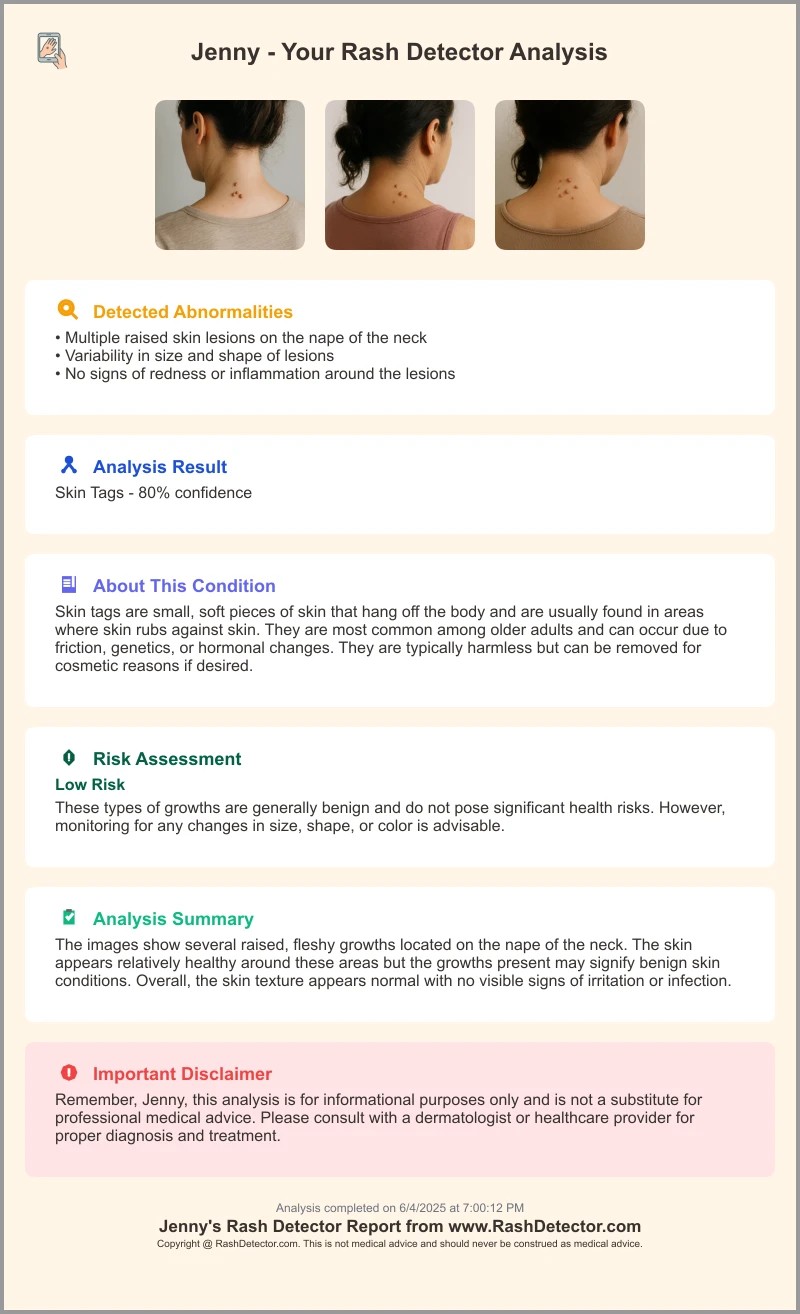
Conclusion
Autoimmune rash symptoms often serve as the first visible clue to an underlying self-immune attack. From redness and itching to scaling and blistering, these skin changes warrant prompt attention. Early recognition leads to accurate diagnosis, tailored treatment, and better long-term control of the autoimmune disease. If you notice unusual or persistent rashes, seek professional medical evaluation without delay.
Additional Resources and Disclaimer
- National Institutes of Health (NIH): Understanding Autoimmune Diseases
- WebMD: Autoimmune Skin Conditions Overview
- GoodRx Health Topic: Autoimmune Skin Conditions
- Prime Health Denver: Autoimmune Rash Guide
Disclaimer: This content is for informational purposes only and does not substitute professional medical advice. Always consult a licensed healthcare provider for diagnosis and treatment.
FAQ
What are the early signs of an autoimmune rash?
Early signs include redness, itching, scaling, or swelling of the skin. These symptoms may appear before other autoimmune features and often persist without specific treatment.
How is an autoimmune rash diagnosed?
Diagnosis involves a detailed medical history, physical examination, laboratory tests (such as ANA, ESR/CRP), and sometimes a skin biopsy to confirm autoimmune pathology.
Can autoimmune rashes be prevented?
While prevention is challenging, minimizing triggers—such as sun exposure and stress—and maintaining skin care routines can reduce flare-ups.
When should I see a specialist?
Consult a dermatologist or rheumatologist if your rash lasts more than two weeks, worsens with standard treatments, or occurs alongside systemic symptoms like joint pain or fatigue.


